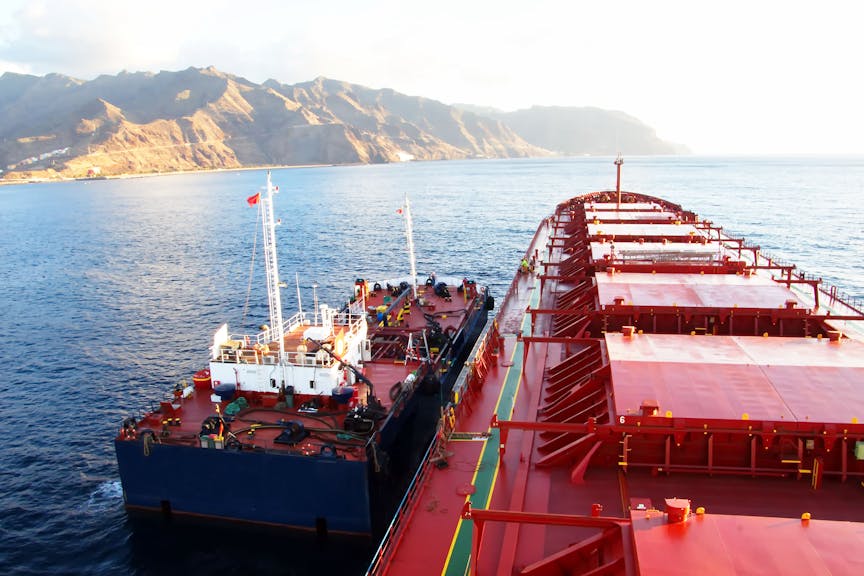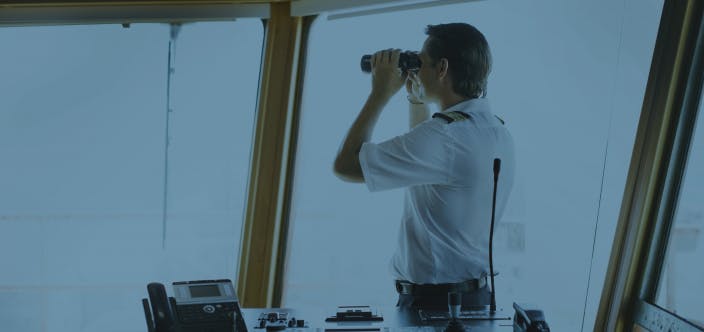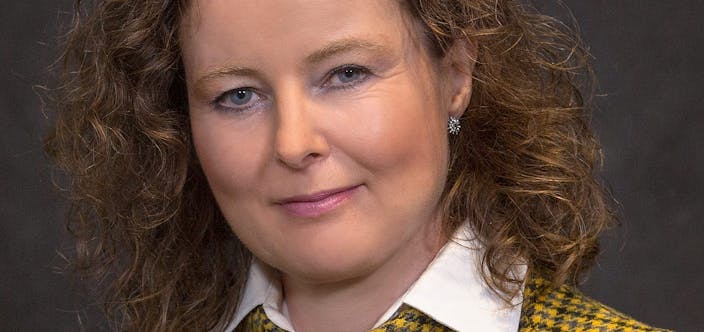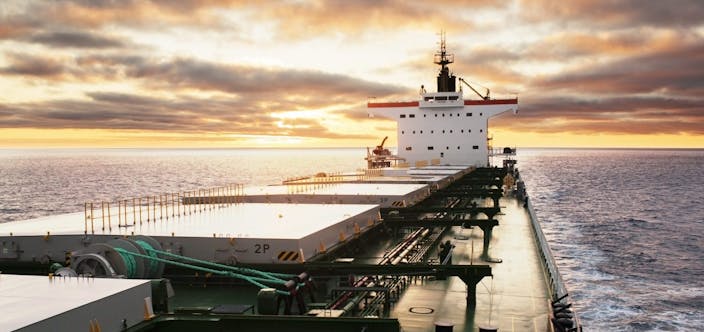Bunkering – mitigating the risk of disputes and claims
In this article we look at three key areas: Firstly, how to limit the risk of disputes arising regarding the quality and quantity of bunkers received. Secondly, we look at the regulatory safety control of our changing fuel landscape. Lastly, we address some of the upcoming changes to be aware of.
Much of this article is based on the content of our podcast with IBIA’s Director, Unni Einemo, which we encourage our readers to listen to for a fuller picture of this complex topic: Listen here >>

Quality disputes
There is an international standard (ISO 8217) to specify the requirements of fuel and it is used as a baseline measure for quality. This is a living document that follows the nature and development of fuel on the market so that the standard is consistently updated and regulated. Bunker quality claims arise when there has been a delivery of off-spec bunkers. Some off-spec fuels can cause significant fuel system and engine damage, possibly endangering the vessel and usually causing disruption to the vessel’s trading schedule. There is a risk, depending on the circumstances, that not all the costs incurred can be recovered through insurance, so a prevention viewpoint is vital.
Well-educated buyers will not necessarily chase the lowest bunker price, they will know where to acquire high-quality reliable bunkers. But issues can still occur, including cases where it is suspected that the fuel contains harmful chemical compounds that are not specified in the ISO 8217 standard. When something goes wrong the usual scenario is that the ship owner blames the supplier, and the supplier puts the blame back on the ship owner by alleging that this issue comes from poor fuel management onboard. The bunker supply chain is long, involving many stakeholders, which makes the process of investigation complicated, and it can be time-consuming and difficult to pinpoint the occurrence of contamination.
Taking proper samples during the bunkering operation is crucial. The first step is to check the supply terms and conditions to see what is agreed upon as the binding sample and the sampling location, as they may need to be re-negotiated. MARPOL Annex VI gives best practice guidelines regarding the locations for sampling (the receiving vessel’s manifold) and states that if a continuous drip sampler is not used, a notification should be issued. It is important to check the sampling equipment for cleanliness and to be mindful of what sample seal numbers are stated on the Bunker Delivery Note (BDN) as this is a binding document that will be leaned upon during any dispute resolution process. If procedures are not followed, then a note of protest must be issued, and evidence documented through photos and written notes.
Quantity disputes
Bunker quantity disputes often arise between the buyer and seller. The ship owner may disagree that they have received the full amount stated by the bunker provider as delivered to the vessel. When the quantities do not match, it can be the result of an innocent mistake, human error in measuring, or deliberate short supply. Unfortunately, the investigation of quantity shortages taking place after delivery can all too often be inconclusive. It is important to record as much information as possible regarding the receipt of bunkers to ensure an evidence base is available should it be needed.
In some places such as the Port of Singapore, a Mass Flow Metering (MFM) system has been implemented to generate data which forms a delivery profile, providing an accurate method of measuring the amount (mass) of product transferred. This improves transparency and integrity, providing better assurance and therefore lowering the occurrence of bunker disputes.
The framework in which MFMs are used is an important consideration. Bunker licencing schemes have proven to be valuable for improving market conditions, and there is an increasing appetite for them. Best practices cannot be upheld, and quality suppliers cannot be supported in a system where less moral companies can get away with cutting corners. The lack of consequences for companies who push the boundaries of honest business to be competitive in the market gives them an unfair advantage, and the playing field becomes tilted against the quality fuel providers. Bunker licensing schemes are increasingly seen as a solution to the issue.
Adapting to new safety considerations
More than 90% of the energy consumed by international shipping comes from oil-based fuels, which remains an item on the agenda of the International Maritime Organisation’s (IMO) safety committee. However, it is common knowledge that under the new environmental regulations there will be a changing fuel landscape within the industry, and as we strive towards better sustainability, we will encounter new types of fuels that come with new risks. We have the experience and expertise to deal with traditional fuels, but there will need to be a significant amount of training for future fuels coming into the market which are very different in nature and present new safety concerns. This training is something that the industry needs to move forward with swiftly in order to be prepared.
Low flashpoint fuels (defined as having a flashpoint of less than 60 degrees Celsius) need to be treated differently from conventional fuels, and LNG is a good example of industry development. To make LNG available as a fuel for non-LNG carriers, the IMO created the IGF code to provide a regulatory framework for supporting safety. The maritime safety committee and its sub-committees are now working on the development of guidance for other types of fuels, such as Hydrogen and Ammonia. Whilst methanol and LPG do not yet have their own chapter in the IGF Code, there are IMO interim guidelines available (MSC.1/Circ.1621) to provide international standards for their use. Future fuels for low-carbon shipping will require an industry-wide transition in our approach to safety and bunkering procedures.
Upcoming changes
- Changes to the information required on the Bunker Delivery Note: Under MARPOL Annex VI and SOLAS Chapter II-2 the flashpoint will need to be included on the bunker delivery note as of the 1st of January 2026. (There is no change to the flash point limit.)
- Antwerp-Bruges Port Authority and Port of Rotterdam Authority have announced that they will mandate the use of a bunker measuring system such as MFM.
- MEPC 79 adopted amendments to MARPOL Annex VI to designate the Mediterranean Sea as an emission control area, meaning that the sulphur limit will be reduced from 0.5% to 0.1% as of the 1st of May 2025.



